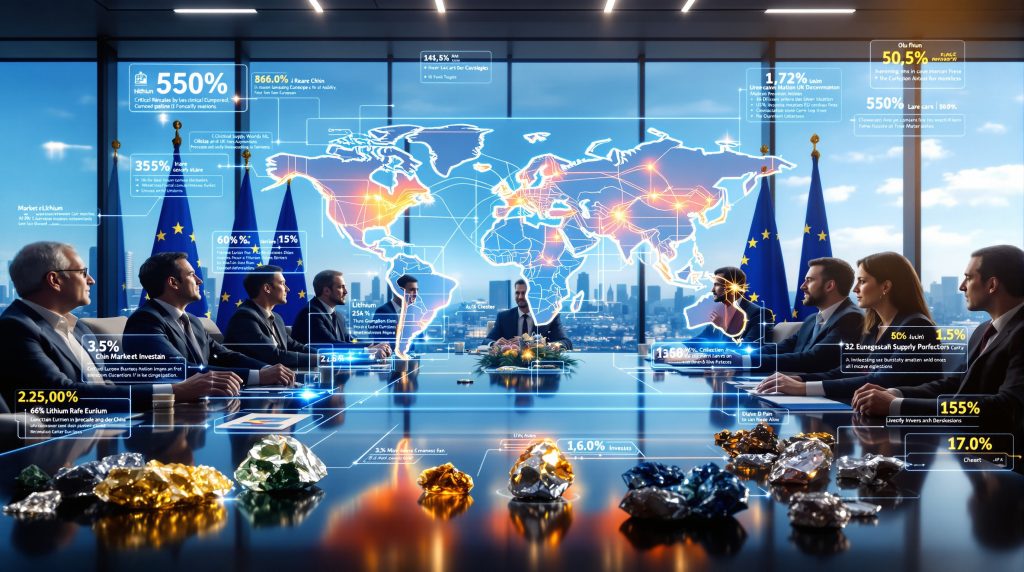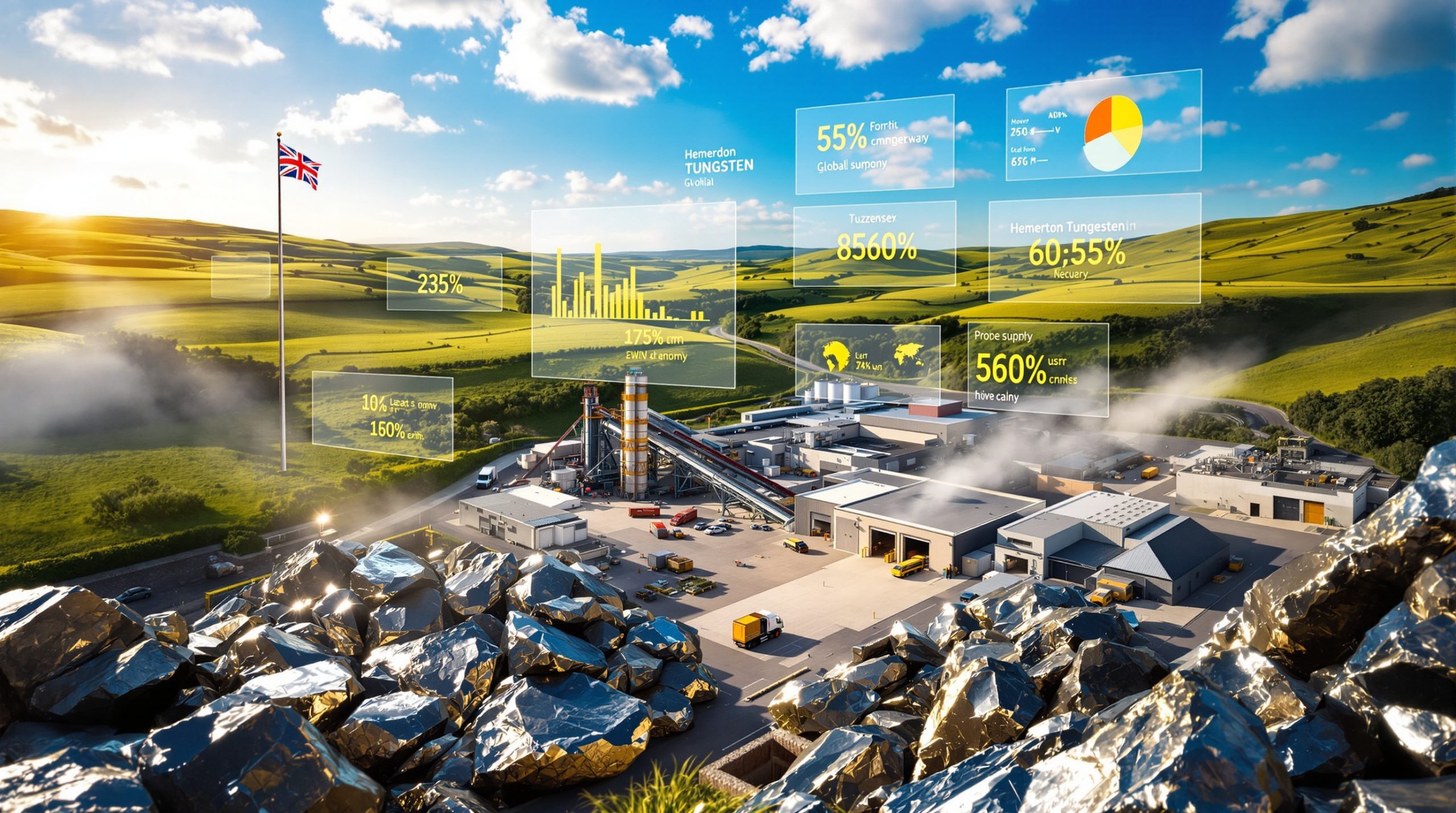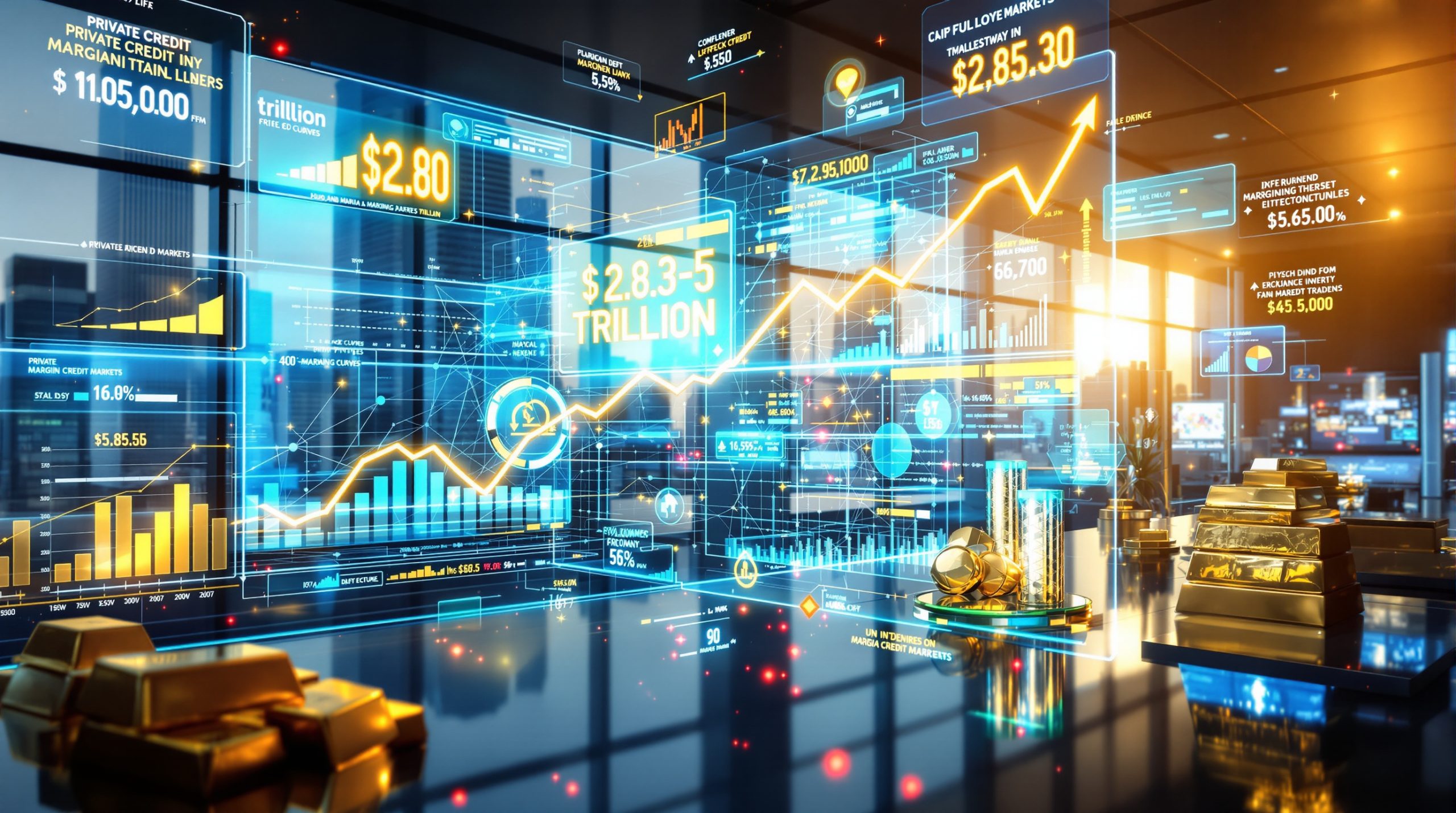Understanding Europe's Critical Minerals Challenge
The European Minerals Investment Network emerges as Europe's strategic response to an escalating crisis in critical raw materials supply. According to the European Initiative for Energy Security's Resources for Europe report, released in October 2025, the continent faces unprecedented vulnerability in securing essential minerals required for industrial transformation and critical minerals energy security.
Europe's dependence on external suppliers has reached dangerous levels, particularly as global demand for lithium, rare earths, and other strategic minerals continues expanding rapidly. The European Initiative for Energy Security estimates that worldwide mineral investments totalling $2.1 trillion will be necessary by 2050, yet Europe currently captures less than 15% of critical minerals financing flows.
This supply chain vulnerability extends far beyond economic considerations. Modern defence systems, renewable energy infrastructure, and electric vehicle manufacturing all depend heavily on materials where Europe lacks both domestic production capacity and processing capabilities.
China's Market Dominance Creates Strategic Vulnerabilities
China's systematic approach to minerals control has created what industry analysts describe as a comprehensive chokehold across the entire value chain. The Asian nation has achieved remarkable market concentration through vertical integration spanning mining operations, refining processes, and manufacturing capabilities.
Furthermore, China's export controls demonstrate how resource dominance translates into geopolitical leverage. Additionally, the Minerals Security Partnership has emerged as a critical international initiative aimed at building resilient critical mineral supply chains through collaboration among like-minded nations.
Processing Monopolies Threaten European Industry
The most concerning aspect of this dependency involves processing capacity rather than raw material extraction. According to the Resources for Europe report, China controls over 90% of global refining capacity for heavy rare earths, materials essential for advanced manufacturing applications.
Key Processing Dominance Figures:
• Rare earth refining: China maintains 90% market control while Europe holds less than 5%
• Lithium processing: Chinese facilities handle 60% of global capacity compared to Europe's 8% share
• Cobalt refining: China processes 65% globally while Europe manages only 12%
• Graphite processing: Chinese operations control 70% of capacity against Europe's 3% share
This processing bottleneck creates multiple vulnerability points for European manufacturers. Even when alternative raw material sources exist, the lack of refining capacity forces European companies to ship materials to China for processing before receiving finished products.
Pricing Control and Supply Security Risks
China's vertical integration model enables both pricing manipulation and supply disruption capabilities that could severely impact European industrial competitiveness. The European Initiative for Energy Security warns that this dependency could cripple European manufacturing within a decade if alternative supply chains remain underdeveloped.
The economic implications extend beyond direct material costs. European automotive manufacturers, renewable energy companies, and defence contractors face potential supply interruptions that could halt production entirely during geopolitical tensions.
Structural Components of the European Minerals Investment Network
The European Minerals Investment Network represents a coordinated financing ecosystem designed to connect multiple stakeholder groups across the minerals value chain. This architecture addresses the fragmentation that has historically weakened European efforts to develop domestic critical materials capacity.
However, implementing such a comprehensive network requires mining industry innovations to ensure technological competitiveness. Moreover, the network must integrate with emerging European CRM facility developments to create synergies across the supply chain.
Multi-Stakeholder Coordination Framework
The network functions by linking several key participant categories:
Public Development Banks provide risk-tolerant capital for long-term mineral projects that private investors typically avoid due to extended payback periods and regulatory uncertainties.
Private Institutional Investors including pension funds and sovereign wealth funds seek ESG-compliant mineral assets that align with sustainability mandates while offering stable long-term returns.
Mining Companies require patient capital structures that accommodate the decade-plus development timelines characteristic of major mineral extraction projects.
Industrial Buyers from automotive, defence, and renewable energy sectors need secure offtake agreements to guarantee material supplies for production planning.
Innovative Risk Distribution Mechanisms
The European Minerals Investment Network employs blended finance structures to distribute project risks across multiple participants:
State Guarantee Programmes: Government backing covers 60-80% of project risks, reducing private investor exposure to levels that attract institutional capital participation.
Subordinated Debt Arrangements: Development finance institutions provide lower-priority debt that absorbs initial losses, protecting senior investors while enabling project financing.
Strategic Equity Participation: Pension funds and sovereign wealth funds take senior equity positions backed by government risk guarantees and industrial offtake commitments.
Long-term Offtake Contracts: Automotive and defence sector companies commit to purchasing specified material quantities at predetermined prices, providing revenue certainty for mining operations.
Learning From Japan's JOGMEC Success Model
Japan's Oil, Gas and Metals National Corporation demonstrates how state-backed financing can effectively secure resource independence while generating commercial returns. JOGMEC's approach provides a proven framework that European policymakers can adapt to continental-scale mineral security challenges.
JOGMEC's Track Record and Methods
Since its establishment, JOGMEC has deployed approximately $8 billion annually for strategic resource investments, achieving a 70% success rate in backed mining ventures. The organisation takes direct equity stakes in overseas projects while facilitating technology transfer programmes that build domestic expertise within Japan's industrial base.
JOGMEC's effectiveness stems from its ability to provide patient capital for projects that commercial banks cannot finance due to extended development timelines and regulatory risks. The organisation's government backing enables it to support ventures through commodity price cycles and permitting delays that typically defeat private financing arrangements.
European Adaptation Requirements
A European equivalent to JOGMEC would require significant modifications to address the continent's multi-national governance structure and diverse industrial requirements. The European Initiative for Energy Security's Resources for Europe report suggests several adaptation mechanisms:
Centralised Risk Assessment Systems: Unified due diligence standards across EU member states would reduce evaluation costs and accelerate project approval timelines. Standardised ESG compliance frameworks would ensure consistent environmental and social impact assessments.
Coordinated Capital Deployment: Initial capitalisation of €50 billion from EU budget lines would provide sufficient scale for continental-level mineral security investments. Integration with European Investment Bank facilities would leverage existing institutional infrastructure.
Member State Co-Investment Requirements: National development agencies would be required to contribute matching funds for projects benefiting their domestic industries, ensuring shared financial commitment and political support.
Addressing Europe's Critical Refining Capacity Gap
The most significant weakness in Europe's mineral security architecture involves midstream processing rather than raw material extraction. Despite possessing substantial mineral deposits and advanced engineering capabilities, European refining capacity remains severely underdeveloped relative to global demand requirements.
Understanding the Midstream Bottleneck
European processing capacity currently handles less than 10% of global critical minerals refining, creating multiple compounding vulnerabilities for the continent's industrial base. This bottleneck forces European manufacturers to rely on Chinese processing facilities even when alternative raw material sources are available.
The economic consequences extend beyond direct processing costs. European companies lose value-added manufacturing opportunities to integrated Asian competitors who control both refining and downstream production capabilities. This structural disadvantage reduces European industrial competitiveness across multiple sectors.
Strategic Dependencies Created by Processing Gaps:
• Defence industry exposure to supply disruptions during geopolitical tensions
• Green transition delays caused by processing bottlenecks limiting renewable energy deployment
• Technology sovereignty risks in advanced manufacturing requiring specialised materials
• Price manipulation exposure through Chinese processing monopolies
Comprehensive Refining Sovereignty Solutions
The Resources for Europe report proposes aggressive intervention mechanisms to rebuild European processing capacity:
Price Support Mechanisms: Minimum price guarantees for European processors would ensure commercial viability despite higher operating costs. Carbon border adjustments favouring domestic refining would create competitive advantages for European facilities.
Strategic Stockpile Purchases: Government procurement at premium rates would provide guaranteed revenue streams for European processing operations during market development phases.
Infrastructure Development Acceleration: Fast-track permitting for refining facilities would reduce regulatory delays that currently discourage private investment. Energy cost subsidies for processing operations would offset Europe's structural disadvantage in electricity prices.
Technology Innovation Support: Research grants for next-generation extraction and processing technologies would maintain European technological leadership while reducing environmental impacts.
Integrating Defence Considerations Into Minerals Policy
Modern mineral security policy increasingly recognises the integration between industrial capacity and national defence capabilities. The European Minerals Investment Network must address defence sector requirements that differ significantly from commercial market demands in terms of quality specifications, supply security, and strategic stockpile needs.
Critical Defence Applications
Advanced military systems depend heavily on specialised materials that require secure, high-quality supply chains:
Fighter Aircraft Requirements: F-35 fighter jets require approximately 920 pounds of rare earth materials each, with specifications demanding consistent material quality and supply availability during multi-decade service lives.
Naval System Dependencies: Modern naval vessels depend on specialised titanium alloys and lithium compounds for propulsion systems, electronics, and defensive capabilities.
Precision Weapon Systems: Missile guidance systems utilise precision rare earth magnets requiring extremely high material purity and consistent magnetic properties.
NATO-Level Budget Integration Strategy
The Resources for Europe report suggests allocating 5% of defence spending toward minerals security investments, recognising that supply chain vulnerabilities represent national security risks equivalent to conventional military threats.
Joint Procurement Programmes: Coordinated purchasing across NATO allies would provide sufficient demand scale to support European processing capacity development while reducing per-unit costs through volume commitments.
Strategic Reserve Requirements: Defence contractors would be required to maintain specified material reserves, creating additional demand for European processing operations while ensuring supply security during emergencies.
Dual-Use Technology Development: Research investments in advanced separation techniques, recycling technologies, and substitute material development would benefit both military and civilian applications.
Securing Industrial Commitment Through Offtake Contracts
Long-term offtake agreements represent the foundation of successful mineral project financing, providing revenue certainty that enables debt financing and attracts equity investment. The European Minerals Investment Network must coordinate these commitments across multiple industrial sectors to create sufficient demand for domestic production capacity.
Automotive Sector Leadership Role
European automotive manufacturers possess the scale and long-term planning horizons necessary to anchor major mineral projects through substantial offtake commitments:
Lithium Supply Agreements: Ten-year contracts from major European car manufacturers would provide revenue certainty for battery-grade lithium production facilities. In addition, innovative lithium extraction technologies offer promising opportunities to enhance supply chain efficiency.
Price escalation clauses would protect suppliers against cost inflation while ensuring buyer access to materials.
Volume Guarantee Mechanisms: Minimum purchase commitments would support mine development financing by guaranteeing baseline demand levels regardless of market conditions.
Quality Specification Standards: Automotive industry technical requirements would drive European producers toward high-value applications rather than commodity-grade materials where Asian competitors maintain cost advantages.
Renewable Energy Integration Opportunities
The renewable energy sector offers additional offtake opportunities that complement automotive demand:
Wind Turbine Manufacturer Commitments: Neodymium supply contracts would support rare earth magnet production for offshore wind development programmes across European waters.
Solar Panel Producer Requirements: Silicon and silver offtake agreements would anchor materials processing for photovoltaic manufacturing capacity being developed within Europe.
Energy Storage System Demand: Battery manufacturing for grid-scale storage applications would create additional lithium-ion supply chain requirements supporting domestic processing capacity.
Government Strategic Reserve Development
90-Day Defence Reserves: Strategic stockpiles for defence-critical materials would provide guaranteed government demand for domestic production while ensuring supply security during international crises.
180-Day Commercial Reserves: Industrial emergency reserves would protect civilian manufacturing during supply disruptions while creating additional demand for European processing operations.
Emergency Release Mechanisms: Predetermined protocols for reserve releases during supply emergencies would provide market stabilisation capabilities while maintaining government influence over critical material availability.
Investment Opportunities and Financial Projections
The European Minerals Investment Network creates multiple investment categories with varying risk profiles and return expectations. Understanding these opportunities enables both institutional investors and policy makers to allocate capital effectively across the minerals value chain.
Domestic European Project Pipeline
Scandinavian Rare Earth Development: Nordic deposits offer proximity to European markets and stable regulatory environments, though harsh operating conditions and environmental sensitivities require specialised expertise and patient capital.
Iberian Lithium Resources: Portuguese and Spanish lithium deposits provide strategic advantages for European battery manufacturing, with development timelines of 8-12 years requiring sustained financial commitment.
Central European Critical Metal Prospects: Emerging opportunities in Eastern Europe offer lower development costs but face regulatory uncertainties and infrastructure limitations requiring careful risk assessment.
Strategic International Partnerships
Canadian Mining Collaborations: Joint ventures with Canadian producers leverage established mining expertise while providing secure access to North American resources under stable governance frameworks.
Australian Joint Development Programmes: Partnership opportunities with Australian miners offer access to diverse mineral resources while sharing development risks across multiple jurisdictions.
African Development Initiatives: Carefully structured investments in African mineral projects can provide cost-competitive resources while supporting sustainable development objectives in resource-rich regions.
Processing and Recycling Investment Categories
Urban Mining Facilities: Recycling operations targeting electronic waste and end-of-life vehicles offer shorter payback periods and lower geological risks while contributing to circular economy objectives.
Battery Recycling Infrastructure: Specialised facilities for lithium-ion battery processing provide growing demand streams as electric vehicle adoption accelerates across Europe.
Electronic Waste Processing Centres: Integrated facilities for recovering rare earths from consumer electronics offer consistent feedstock supplies and shorter development timelines than traditional mining projects.
Expected Returns and Investment Timeframes
| Investment Category | Projected IRR Range | Typical Payback Period | Risk Assessment |
|---|---|---|---|
| Domestic Mining Projects | 12-18% | 8-12 years | Medium Risk |
| International Joint Ventures | 15-22% | 6-10 years | Medium-High Risk |
| Processing Facility Development | 10-15% | 5-8 years | Low-Medium Risk |
| Recycling Operations | 18-25% | 3-6 years | Low Risk |
These projections reflect government support mechanisms including risk guarantees, offtake agreements, and tax incentives that improve project economics compared to purely commercial financing arrangements.
Regulatory Framework and Environmental Integration
Successful implementation of the European Minerals Investment Network requires comprehensive regulatory reforms that balance environmental protection with strategic mineral security objectives. Current permitting processes often take longer than project development timelines, creating financing challenges that discourage private investment.
Streamlined Approval Processes
Consolidated Environmental Assessments: Single comprehensive reviews replacing multiple overlapping evaluations would reduce approval timelines while maintaining environmental protection standards. Parallel regulatory reviews across different agencies would eliminate sequential bottlenecks currently extending project approval periods.
Digital Application Systems: Electronic submission and tracking systems would improve transparency and reduce administrative delays while enabling real-time monitoring of approval progress.
Maximum Timeline Commitments: Regulatory agencies would commit to 24-month maximum approval periods for strategic mineral projects, with automatic approval triggers if deadlines are not met.
Enhanced ESG Standards Integration
Mandatory Biodiversity Impact Assessments: Comprehensive ecological evaluations would ensure mineral projects contribute positively to biodiversity conservation through habitat restoration and species protection programmes.
Community Benefit-Sharing Requirements: Local communities would receive guaranteed revenue shares from mineral projects, creating stakeholder alignment and reducing opposition to development initiatives.
Water Usage Optimisation Protocols: Advanced water management systems would minimise environmental impacts while ensuring sustainable resource utilisation throughout project lifecycles.
Carbon Neutrality Targets: All network-supported projects would be required to achieve carbon neutrality through renewable energy utilisation and offset programmes.
Innovation Incentive Programmes
Technology Development Grants: €2 billion annually for breakthrough mining and processing technologies would maintain European technological leadership while reducing environmental impacts of resource extraction.
Clean Extraction Method Tax Credits: Financial incentives for environmentally advanced extraction technologies would encourage innovation while improving project economics for sustainable operations.
Research Partnership Programmes: Collaboration agreements with European universities would accelerate technology development while training skilled personnel for the expanding minerals sector.
Intellectual Property Sharing Agreements: Coordinated technology sharing would prevent duplication of research efforts while ensuring European companies maintain competitive advantages in advanced materials processing.
Geopolitical Implications of European Mineral Independence
Achieving mineral independence carries profound implications for Europe's position in international relations, trade negotiations, and strategic autonomy. The European Minerals Investment Network represents more than economic policy; it constitutes a fundamental shift toward resource sovereignty that will reshape global power dynamics.
Strategic Autonomy Benefits
Elimination of Supply Chain Weaponisation: Domestic processing capacity would prevent hostile nations from using material supply disruptions as economic coercion tools during diplomatic disputes or military conflicts.
Enhanced Negotiating Power: Reduced import dependencies would strengthen Europe's position in trade negotiations while providing greater flexibility in foreign policy decisions affecting resource-rich nations.
Economic Security Improvements: Protection against price manipulation would provide stable input costs for European manufacturers, improving long-term industrial planning capabilities and competitive positioning.
Global Partnership Expansion Opportunities
Democratic Resource Alliance Development: Strengthened cooperation with resource-rich democracies would create alternative supply networks based on shared governance values rather than purely economic considerations.
South-South Cooperation Initiatives: European technology and financing could support mineral development in developing nations while creating mutually beneficial trade relationships.
Sustainable Development Goal Alignment: Environmental and social standards required by the network would promote responsible mining practices globally while supporting international development objectives.
Technology Transfer to Developing Nations: European mining and processing technologies could be shared with partner countries to build global capacity while creating market opportunities for European engineering companies.
Performance Measurement and Success Indicators
The European Minerals Investment Network requires comprehensive metrics to evaluate progress toward mineral independence objectives and guide policy adjustments. Success measurement must encompass supply security, investment mobilisation, technological innovation, and environmental performance across multiple timeframes.
Supply Security Achievement Targets
Import Dependency Reduction: The primary objective involves reducing Europe's critical mineral import dependency from current levels of approximately 80% to 40% by 2035, with further reductions targeted for subsequent decades.
Strategic Reserve Establishment: Development of 90-day strategic reserves by 2030 would provide buffer capacity during supply disruptions while demonstrating European commitment to mineral security objectives.
Domestic Processing Capacity: Achievement of 50% domestic processing capacity by 2040 would eliminate the current bottleneck forcing European materials through Chinese refining facilities before returning to European manufacturers.
Investment Mobilisation Benchmarks
Private Capital Attraction: Mobilisation of €200 billion in private investment capital by 2035 would demonstrate the network's effectiveness in reducing investment risks and creating attractive opportunities for institutional investors.
Project Portfolio Development: Support for 300 projects across the complete minerals value chain would provide diversification and resilience while creating employment opportunities throughout European regions.
Return Achievement for Participants: Maintaining 15% average annual returns for network participants would ensure continued private sector engagement while generating sufficient profits to attract additional investment capital.
Innovation and Efficiency Improvements
Technology Commercialisation: Development of 50 breakthrough technologies for mineral extraction, processing, and recycling would maintain European leadership in sustainable resource development while reducing environmental impacts.
Environmental Impact Reduction: Achievement of 25% reduction in extraction environmental impacts would demonstrate compatibility between mineral security objectives and environmental protection requirements.
Recycling Efficiency Enhancement: 40% improvement in recycling efficiency rates would reduce primary extraction requirements while contributing to circular economy objectives.
Critical Success Measurement: The network's ultimate effectiveness will be determined by Europe's ability to maintain industrial competitiveness while achieving strategic autonomy in critical materials supply chains, measured through trade balance improvements and reduced vulnerability to external supply disruptions.
Europe's Path Forward: Strategic Imperatives and Implementation
The European Minerals Investment Network represents far more than a financing mechanism for mining projects. It embodies Europe's recognition that resource security equals strategic sovereignty in an era of intensifying geopolitical competition and accelerating technological transformation.
As China's dominance in critical minerals processing continues expanding, Europe confronts a narrowing window of opportunity to establish alternative supply chains before dependency becomes irreversible. The $2.1 trillion global investment requirement by 2050, as identified by the European Initiative for Energy Security, presents both an enormous challenge and a historic opportunity for European leadership in sustainable resource development.
Consequently, success in this endeavour requires unprecedented coordination between public and private sectors, integration of defence and industrial policy objectives, and patient capital deployment across investment cycles spanning multiple decades. Furthermore, the stakes extend beyond immediate economic considerations to encompass technological sovereignty, defence capability maintenance, and climate transition success.
The European Minerals Investment Network's effectiveness will ultimately determine whether Europe maintains its position as a global industrial power or becomes increasingly dependent on others for the materials that power modern civilisation. This challenge demands the same level of strategic commitment and resource mobilisation that Europe demonstrated during the COVID-19 pandemic, but sustained across decades rather than years.
Europe's response to this minerals challenge will define its industrial future and geopolitical relevance for generations to come. The time for coordination and planning has passed; the era of implementation and action has begun.
Could This Be Your Opportunity to Profit From Australia's Next Major Discovery?
Discovery Alert's proprietary Discovery IQ model provides real-time notifications on significant ASX mineral discoveries, transforming complex mining announcements into actionable investment insights. Join thousands of subscribers who use these instant alerts to identify trading opportunities ahead of the broader market, and explore historic examples of how major mineral discoveries have delivered exceptional returns to early investors.




